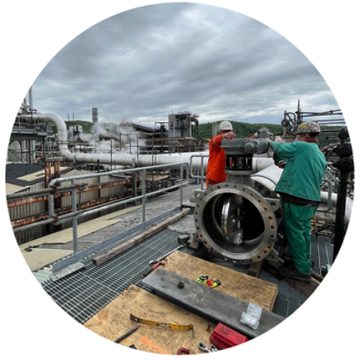- Home
- Engineering Services
Valves are fundamental tools within the industrial and domestic control system niches. Although relatively undistinguished, a closer look at the globe valve design reveals a cutting-edge synchronization of sophisticated engineering principles aimed at streamlining fluid dynamics. If you have ever wondered about the world of fluid control systems, welcome as we delve into the depths of globe valve handles.
Things to Remember When Working with Control Valves
When one deals with control valves, a few key points should be remembered:


Valve trims usually consist of a stem, disk, and seat rings. The stem connects the handwheel and disk. It is responsible for the proper positioning of the disk. The seat ring houses the disk and provides a soft or hard seat, depending on the application. Lastly, the disk forms the part that facilitates or restricts the flow when in contact with the seat.
Here are a few key reminders when choosing valve trim:
Analyze the process conditions including the type of medium, pressure, and temperature to decide the right trim type.
Consider the compatibility of trim material with the medium for durability purposes.
Invest in customized trim for unique process conditions, thus ensuring precision and better performance.
Consider valves used in a petrochemical plant. These valves play a critical role in controlling the flow of various chemicals. Using CFD analysis, engineers can predict how these fluids will interact with the valve. This knowledge can be used to design valves capable of withstanding corrosive chemicals, high pressures, and temperatures
A valve body is a crucial component of a fluid or gas control system, typically found in automatic transmissions of vehicles, hydraulic control systems, and other control-valve assemblies. This fundamental part’s primary purpose is to regulate, direct and control the flow of fluid or gas in a system by opening, closing, or partially obstructing various passageways. Operating much like the conductor of an orchestra, the valve body ensures all elements within a system move and function harmoniously, ensuring optimal performance and safety.
